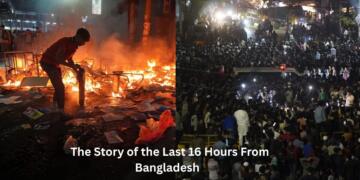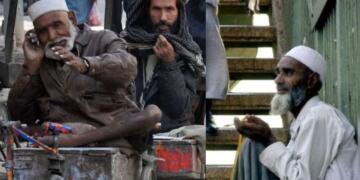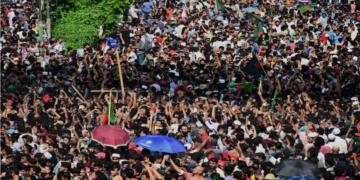A living cell splits into two. Then, both cells grow and again split. Here, splitting doesn’t kill a cell but helps it to grow. Seems Narendra Modi read this lesson of biology somewhere.
In the elections to BMC, the tally of Shiv Sena that was the leading part of the coalition has increased from 75 to 84 and BJP’s own seats have increased to a whopping 84 from a mere 31. So, the split and grow policy adapted by BJP since 2014 is giving results, overcoming all shortcomings that a ruling party/coalition experiences.
In a way, the “Split & Grow” policy is advanced version of the “Divide & Rule”. First results are observed in 2014 general elections, in the state of Tamilnadu. When the rumour mill was churning about the Bhai-Behen relationship between Narendra Modi and Jayalalithaa and how he saved Jayalalitha from an apparent slow poisoning and how the staff of Poes Garden had turned Gujarati to prevent further attacks on her, contradicting all these rumours, Narendra Modi attacked Jayalalithaa on the issue of corruption. And she reverted, as a reaction. Neither was there any coalition, but a bitter fight between BJP and AIADMK, relegating DMK and Congress to side lines. As BJP and AIADMK were fighting so bitterly, Congress could not opt for a coalition with DMK that was deep into the sludge of corruption with only the goggles of the old man above the mud. So, Congress, which was neck deep into corruption had taken a moral superiority and opted to fight elections independently. The rest is history. AMMA won 37 out of 39 seats while even BJP bagged one from Kanyakumari in a symbolic notion of its presence in extreme south.
Then came the state elections of Maharashtra, where Shiv Sena refused BJP to leave half seats and in a bitterly fought election, the combine of BJP and Shiv Sena reduced Congress and NCP to a total of less than thirty percent seats in the assembly. Had BJP accepted the offer of Shiv Sena and contested only in 119 seats, it would never have won 122 seats that it eventually got. For Shiv Sena, however, it was a bad memory as it was forced to play second fiddle to the erstwhile minor partner of the alliance. As Shiv Sena and BJP were fighting on their own, Congress ditched the Pawar gang that was at the centre of irrigation scams in the state, considering the public anger against the Chhota Pawar, who ridiculed the farmers by saying that he will urinate from helicopters so their fields are wetted. The four-corner fight caused split voting and this was to the advantage of saffron combine.
Come 2017, it was again clear that there will not be any alliance between BJP and Shiv Sena. Shiv Sena couldn’t offer more seats to BJP as it would amount to inviting their own misfortune. If it was a question of curtailing aspirations for BJP, for Sena, it was a struggle for existence. Finally, both chose to contest elections on their own and the city witnessed bitter acrimony between both parties. Both parties hve fought so openly, they made other parties disappear from the scene! And, the split and grow scheme had presented the BJP-SS combine with an impressive result. While even after being together, they were short of majority in the municipality, in the present elections, they won about seventy percent of seats.
On a lighter note, Shiv Sena may take support of Congress to rule BMC. And it may still be a part of the state government ruled by BJP. If Shiv Sena opts out of the state government (which it never would), there is NCP that may extend support to BJP. Well, then the state of Maharashtra will be a prime example of an Italian style of democracy, much to the dismay to nationalists who denounce anything that has a connection to Italy.
Perhaps, the only person who realised the true power and mechanics of this scheme was Prashant Kishor, who pooled all parties together, making even hard core opponents like Nitish and Laloo to sacrifice their egos, for the sake of ‘power’. Even in UP, he tried his level best to forge an alliance between Congress and Samajwadi Party. But, in Indian politics even petty egos run parallel to opportunism, preventing such alliances taking shape.
Seems like those corporate trainers who advocate one to ‘unlearn’ before learning afresh, Narendra Modi took it to heart about splitting only to grow to double size. For me, I liked the intention behind the mechanism of ‘Split & Grow’ policy very much. After all, it is about growth. Nevertheless, every scheme has an expiry date and BJP may need another scheme before current scheme loses its efficacy.
There were talks on Devendra Fadnavis being replaced for failing to win BMC on his own. Looks like that is not going to happen and a key takeaway from BMC Elections is that to keep Communal BJP out, Secular Vote of Muslims belonging to Congress, NCP was shifted to Shiv Sena. True Blue Pragmatism. It even makes one think – What is Modi and Uddhav planned the downfall of NCP and Congress together?

































